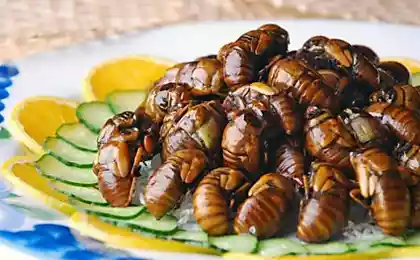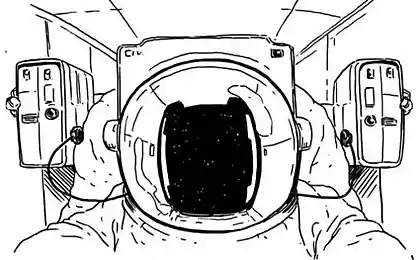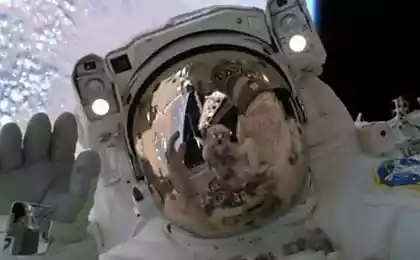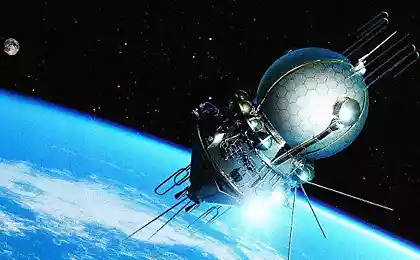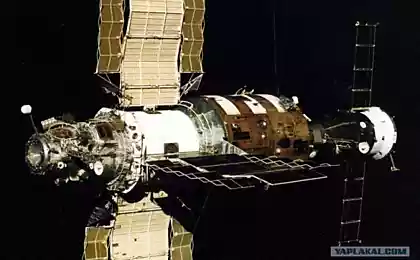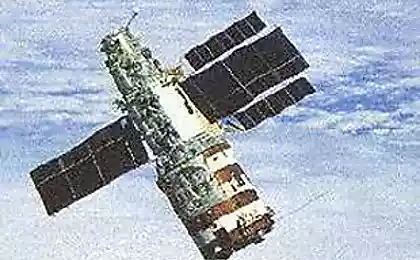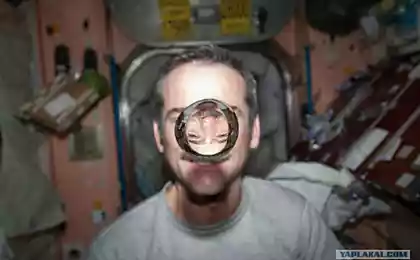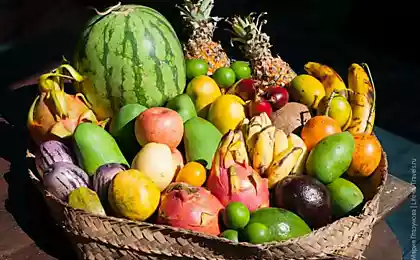654
Eating astronauts from different countries

Do you know what is supported by the astronauts in orbit? Why cook a special space for beer and some Russian delicacy queues on the ISS? We are in the Site know what space food and how astronauts surprise the best cooks of the world.
Russia
Biruliovsky pilot plant is the only Russian manufacturer of food for astronauts. First meal in space tried Yuri Gagarin. His Breakfast was three tubes for 160 g: two with meat and one with chocolate.
Today, Russian astronauts eat for Breakfast cereal and cottage cheese. For cheese on the ISS queues astronauts from other countries I love this snack. In the Russian module on the ISS, no fridge or microwave, which makes cooking and menu development.
Cheese, soup, mashed potatoes meat and meat in sauce. To space the food has specific requirements: it should be light, easy to prepare in orbit, not to leave waste. For example, Russian scientists have developed cosmolab that does not crumble.
Chewing gum is the best friend of an astronaut in conditions of weightlessness, where the Tartar has begun to display due to insufficient secretion.
All products that receive Russian cosmonauts must undergo a mandatory certification. They cannot simply order pickles from the store. But ordinary people can buy kits, space food in planetariums throughout Russia.
Russian cosmonauts can bid what they would like to try in space. Daily diet is designed for four meals and is the rate of consumption of an astronaut 3200 calories. Condensed milk is one of the most fattening foods.

Despite the inscriptions in tubes is not a Russian vodka, and borscht. Such gifts American colleagues surprised the Soviet cosmonauts after a successful docking of the "Soyuz — Apollo".

Russian cosmonauts receive fruits and vegetables from the Ground. On the ISS they have a decent selection — about 300 dishes and products. Astronauts from different countries visit each other in modules for dinners and Lunches, tasting food from different countries, and every Sunday, arrange a joint dinner.
USA
Pasta with meat sauce. The dish was tasty and edible, you just need to add water. Most American meals are vacuum-Packed. Them cheaper to transport, easier to heat in the microwave, they are perfectly stored in the refrigerator.
Salad-cocktail shrimp. Thanks to the vacuum-Packed space food retains all useful properties and vitamins. Astronauts in orbit, be sure to use products rich in calcium. Americans eat yogurt with berries and peaches, and the Russians get cheese with herbs and garlic.
Guacamole. NASA astronauts may be asked to add something from your favorite foods and beverages sold in a regular store. Most importantly, the food does not crumble, was light and transportable.
Bacon bits — a favorite delicacy in orbit. All products can be divided into fresh with a shelf life of 48 hours, the meat with an extended shelf life, the products of average humidity with increased shelf life, natural products (nuts, cookies, etc.) and prepared using heat which kills all bacteria and germs.

Meats, including M&M's, cheese bread, spinach and orange soda in the powder. If you use soda in a weightless gas and liquid in the stomach are separated from each other and from human belch. Because of this, beer and Coca-Cola specially processed for space.
Analog Burger from tortillas made by the astronaut in honor of the Day of the Burger on the ISS. Regular bread crumbles, so American astronauts eat tortillas.
Festive lunch in honor of thanksgiving: mashed potatoes, smoked Turkey, cornbread stuffing, cranberry sauce. In honor of the special occasion for the astronauts are prepared by the best chefs in the world, and the ISS fall delicacies from different countries, such as French truffles.
Italy

Sending astronauts to the ISS, the European space Agency creates for them a special menu consisting of dishes of national cuisine.

For many years the cosmonauts begged to replace the instant coffee with something tasty. The situation was changed by the Italian astronauts who brought into orbit an excellent coffee machine designed specifically for zero gravity Italian coffee companies Lavazza and Agrotec.
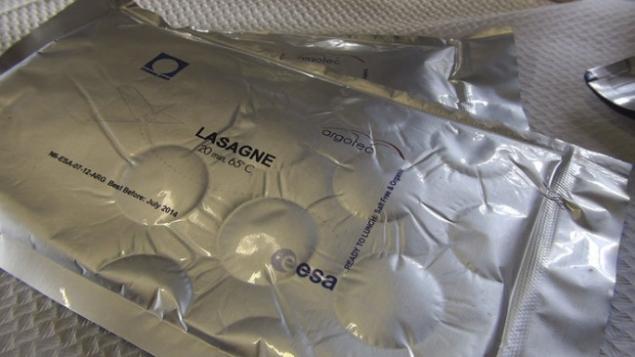
Agrotec has also created the space lasagna — organic salt with a shelf life of 36 months.

Italian day on the ISS. In honor of the successful completion of the mission the astronauts got Italian treats — olives, dried tomatoes, fettuccine pasta with sauce and risotto.
Korea
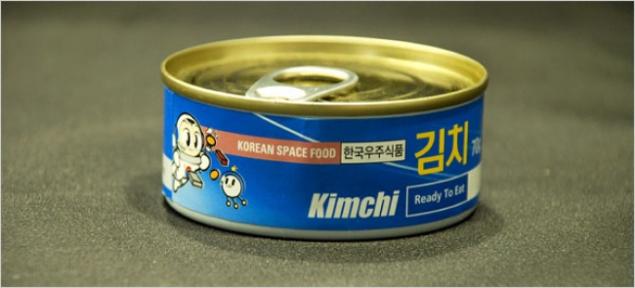
Kimchi, a signature dish of Korea. It is fermented cabbage seasoned with red pepper, onion, garlic and ginger. Today kimchi is canned manufactured for the astronauts, including Russian.

One of the differences between Korean space food — consistency. Instead of dry and frozen food, the Koreans do the dishes look like something between a thick soup and sauce. Astronauts need to feel maximum taste, because in weightlessness the person loses the sense of taste and smell, which affects the perception of food in space.

Marinated meat, noodles, and snacks — anything that will easily survive the trip into space. First Korean food during transportation and being in orbit has turned into a perfect environment for bacteria, while scientists are not brought to the special rules of cooking.
China

This "moon biscuits", specially created for the mission to the moon. In China, for each mission, develop a special menu. The first Chinese astronaut in orbit was eating pork, chicken kung PAO and rice, washed down with a traditional herbal tea.

Dried fruit is a favorite delicacy of the astronauts. The average Chinese astronaut consumes 2734 calories a day.

In this package is one serving of beef, but pork is the most popular meat in China. It comes into orbit fresh, "diminum" and sun-dried (for long storage).
Japan

A Japanese astronaut going to eat noodles with chopsticks. The most popular dishes among Japanese astronauts, sushi, noodles, jelly and rice balls. The choice is more modest in comparison with the Russian space food. Lots of sauces and jellies, including foods to eat mayonnaise.

Vegetable noodles with taste soy sauce. Scientists had to work hard to make the perfect space noodles. It is more flexible, a little heavier worldly, far richer in taste.

Fruit puree of apples, carrots and citrus is one of complete natural sources of vitamins. "For dessert" astronauts get mints and caramels.
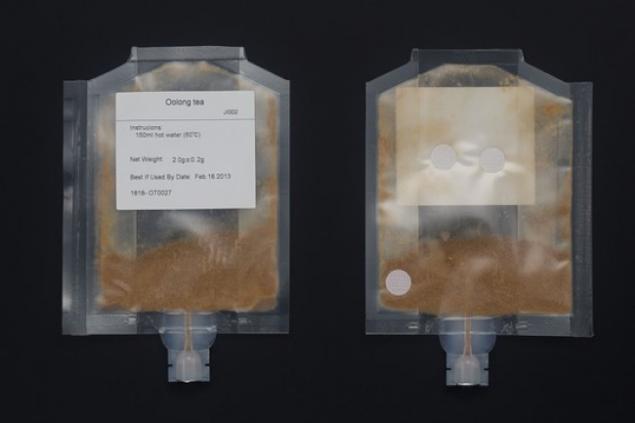
Oolong tea powder as green tea, is a special pride of the Japanese astronauts. They treat colleagues from other countries. In 2008, the ISS astronauts were able to try beef in Japanese, okonomiyaki and the tofu with the Hoisin sauce.

Materials cosmos-journal.ru,
seeker.com
See also
20 cool things for lovers in space
Alexey Leonov. First in space
via www.adme.ru/video/legenda-kosmonavtiki-aleksej-leonov-o-tom-chto-znachit-byt-pervym-1235315/
Minivans Chrysler Pacifica with the autopilot Google will go on the streets in 2017
All blue-eyed people share a secret

